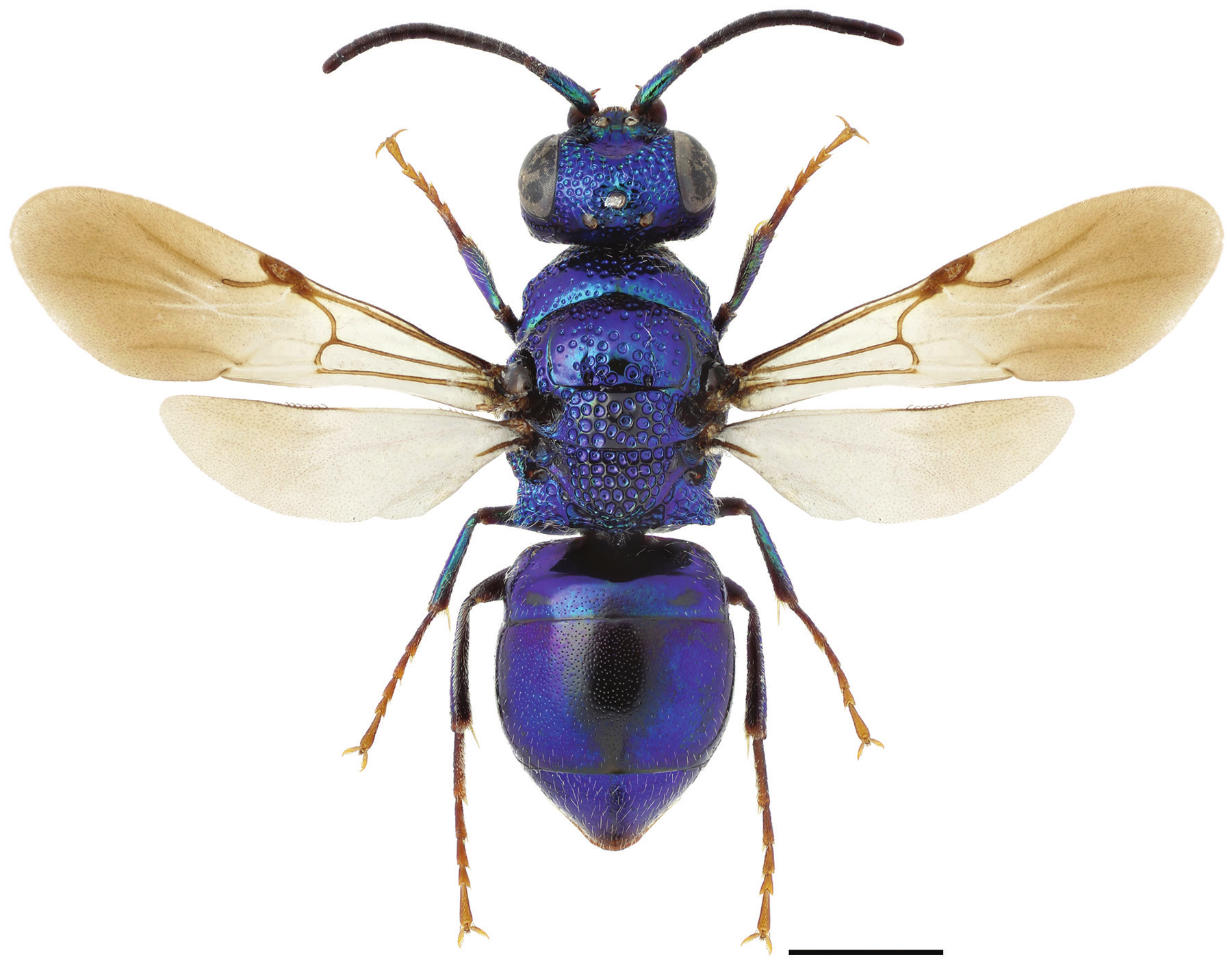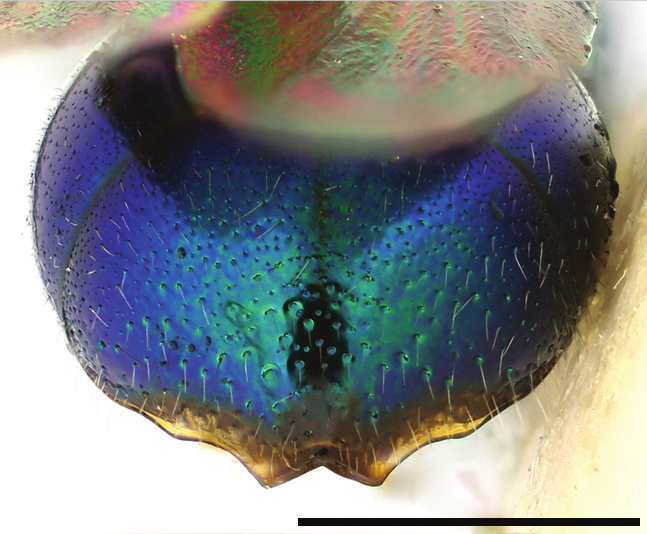Philoctetes truncatus
Figure 35
Philoctetes truncatus ♀. Scale 1 mm.
- Innhold
- Diagnosis
- Distribution
- Biology
Diagnosis
Figure 36
Philoctetes truncatus ♀ T3, postero-dorsal view. Scale 1 mm.
Length 3–5 mm.
The species resembles Omalus aeneus and O. puncticollis by its habitus and colouration. In the female, the body is completely shiny deep blue, violet or green (Fig. 35), whereas it is mainly black with green or blue reflections in the male. Compared to Omalus species, the metascutellum is more sharply elevated and the punctures on the mesoscutum are larger. The apical notch of T3 is shallowly triangular and bordered by a thickened margin (Fig. 36). The lateral margins of T3 are semitransparent and strongly convex adjacent to the apical notch (Fig. 36).
Distribution
Denmark, Estonia, Latvia, Sweden. Rare. New to Latvia (1 ♀, Jekabpils, Avotu iela, 7.–30.VI.2006, leg. P.N. Buhl).
Trans-Palearctic: from western Europe and northern Africa to Russian Far East (Kurzenko and Lelej 2012).
Be aware that the records present in the GBIF map may be misleading for some countries due to unrevised data sets or missing information.
GBIF Taxon: Philoctetes truncatus (Dahlbom, 1831)Biology
Habitat: sparsely vegetated sandy areas, sandstone and loess banks (Heinrich 1964, our own obs.). Adults occasionally visit flowers of Apiaceae (Trautmann 1927, Linsenmaier 1997).
Flight period: June to July.
Host: Diodontus tristis (Vander Linden) (Crabronidae) (Hoop 1961, Linsenmaier 1997, Saure 1998, Jacobs and Kornmilch 2007, our own obs.).

